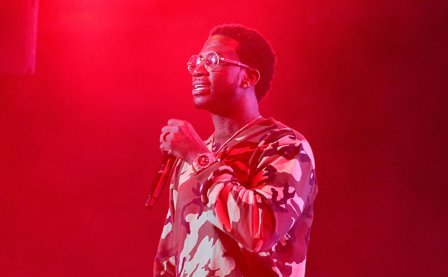In a couple of weeks, No Label 2 will turn four years old. I remember it well, which is to say that I recall a distinct period during which “Fight Night” was inescapable. Recently, however, I’ve remembered something else: my friend, as excited about Migos as I was, asking whether I was was honestly able to listen to the tape straight through. The answer was an unequivocal no. We knew that the trio’s ad lib-loaded bombast was the future — just listen to “Fight Night” — but 25 tracks was a big ask for four-minute songs that at times approached the intensity of 60-second punk screamers.
Four years later, Migos have become the present (at the possible expense of being the future). Alongside a slew of hits, the group’s members — to say nothing of a legion of affiliates and hangers-on — have themselves achieved a degree of cultural ubiquity usually reserved for mononymous solo acts. There is, at present, no other rap entity that could get away with an album titled Culture (let alone a sequel a full year later). It’s a self-fulfilling prophecy; in the arms race of reaction at the heart of digital music media, surrendering a full week to coverage of Culture II was necessary just to keep up. It’s not the music alone that makes any new Migos release necessarily culture; it’s the ensuing tidal wave of phrases, images, and controversies that reanimate the album in the form of memes, gossip, and endless annexation of the general public’s attention.
This is a shame, as the music remains the most noteworthy byproduct of the Migos phenomenon by far. Culture II is very long, yes, and vulnerable to momentum-killing duds like “Beast,” but to assess the album as an irreducible work is to cling to an entirely outmoded conception of how music is consumed. Across its 24 songs, the highs are as good as anything they’ve released; more importantly, there’s enough variety that personal favorites will vary to the listener. For some, the album will likely live on for some time through “Stir Fry,” “BBO,” or “MotorSport” alone; for others, the entire thing may well remain in rotation until Culture III rings in 2019.
As the default unitization of music moves inexorably away from the album and toward the playlist (in fact, Quality Control’s official Spotify link points not to the album, but to a career-spanning, 72-song Culture II playlist), the burden of A&R work shifts from the label to the listener. Put another way, the consequences of releasing a 24-song album pale in comparison to the benefits of catering to the obsessives. It’s them, after all, who will make the culture tick; an album of this length is in part a concession that a truly viral hit remains as much a product of chance as of intent. So long as it focuses attention on Migos, positive and negative press is essentially indistinct; it would have been wholly unsurprising to see #Culture2DurationalListeningChallenge trend at some point in the past week, the question of whether it was sincere or not irrelevant.
Given that its goals were achieved by its existence alone, it’s hard not to feel as though my assessment of Culture II is more or less immaterial. For my money (the $10 monthly tribute to Spotify, that is; although CD copies theoretically exist), it’s a success, well worth investigating beyond the four or five tracks that will make their way to you regardless. At this point, the Migos sound could be charitably called “refined” (less so, “algorithmic”), yet while the edges of their earlier work have been largely dulled by their transformation into international stars, the alchemical effect of radio-ready hooks with production budgets to match remains a delight.
So the question remains: Are you honestly able to listen to Culture II straight through? The answer, on the other hand, means less than ever.
More about: Migos




